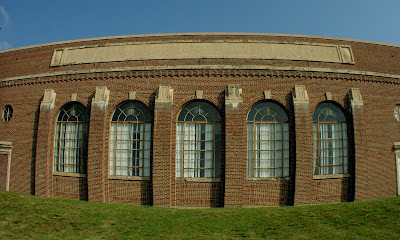When Bob and I married in September 1971, I was just starting my first full-time job, teaching at Anne Arundel Community College. So we decided to postpone our honeymoon until after the school year ended. We had some contacts in Europe, Christine, a former au-pere in France and Sandra, a friend working for the State Department and living in Germany, so we decided we would splurge and spend a month in Europe.
As soon as I had finished grading final exams in May, we packed up our Eurail passes and headed across the Atlantic. First stop, Paris, where we met up with Sandra, who came from Germany to meet us. While we were in France, we attended a wedding in Christine's family at a lovely church out in the countryside. We also visited some of the major sites like Versailles, Notre Dame, the Louvre and the Eiffel Tower. Here I am with Sandy at the Eiffel Tower. We spent a lot of time looking at prints in some of the small shops near the Louvre and eventually bought a couple, even though they seemed wildly expensive at the time, given our small budget. After France, we took the train to Bad Aibling, a lovely town south of Munich where Sandra lived. In Germany, of course we spent some time at beer fests and toured some of the countryside. However, about this time, I started feeling unwell, throwing up all the time. This put somewhat of a damper on our travel plans. I managed a train trip to Florence, but when Bob and Sandy took the train to Rome, I stayed behind. I didn't make it to Rome until 40 years later, but that is another story. |
| Neuschwanstein |
In any case, we saw a little more of Germany and stopped in England on our way back to the States, and carried on with getting ready for a new baby.
Everything went well until about October or November when my obstetrician said I was gaining too much weight. You might not remember, but at the time, obstetricians were all over watching that you didn't put on too much weight. I was starving. I mean I cried at night I was so hungry. And poor Bob would do his best to remind me that I was not supposed to gain so much weight. I have to say I didn't take his reminders very well.
Finally, around Thanksgiving, the obstetrician detected two heartbeats and informed me that I was going to have twins. Remember that sonograms were not a routine thing at the time, so you just had to depend on physical observation. Well, to my relief, he then said that since it was twins, I could eat as much as I wanted. By December when the semester was over, I was too big to fit behind the steering wheel of my car and I mostly just stayed at home in our apartment.
Bob and I debated and debated over names for the twins. In fact, we debated so long that the hospital nurses threatened to name the babies themselves. We wanted family names and finally decided on Matthew Scrivener (a very early colonial settler) and James Gibbons (a name that happened to occur in both our families) Agee. The boys were fraternal rather than identical twins, one with dark hair and dark eyes taking after the Agee side and one with blond hair and blue eyes, taking after the Scrivener side. What great planning on our part. Everyone was happy!
Meanwhile, as we dithered over the names, my sisters were most anxious to see their new nephews. Unfortunately for them, and unlike the more open policies of today, the hospital at the time did not allow visitors to the nursery. However, Louise and Maripat did not let that stop them. They snuck into the hospital and by a circuitous route of back stairs and side hallways managed to make it to the nursery before being caught and thrown out.
I was lucky enough to be able to go from the hospital straight to my parents' home where I had two adoring aunts and three adoring uncles to help take care of the twins, who were the first grandchildren on both sides of the family. They weren't spoiled at all, not to worry.
Of course, Matt and James were also the first grandchildren in the family. I think this picture of my Dad with his grandsons says it all about how he felt.
Only the beginning of many adventures as the mother of twins.













